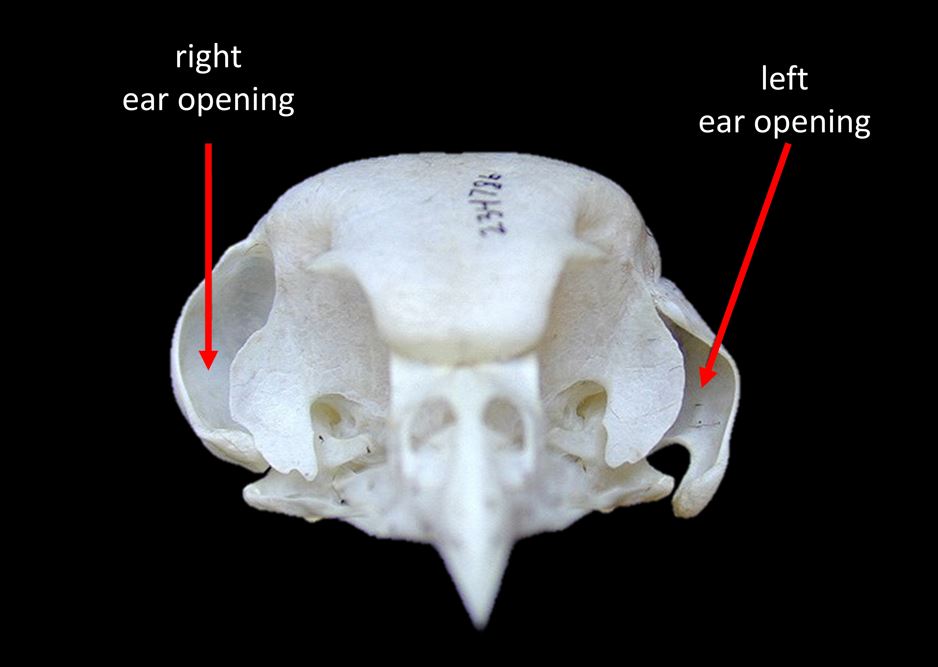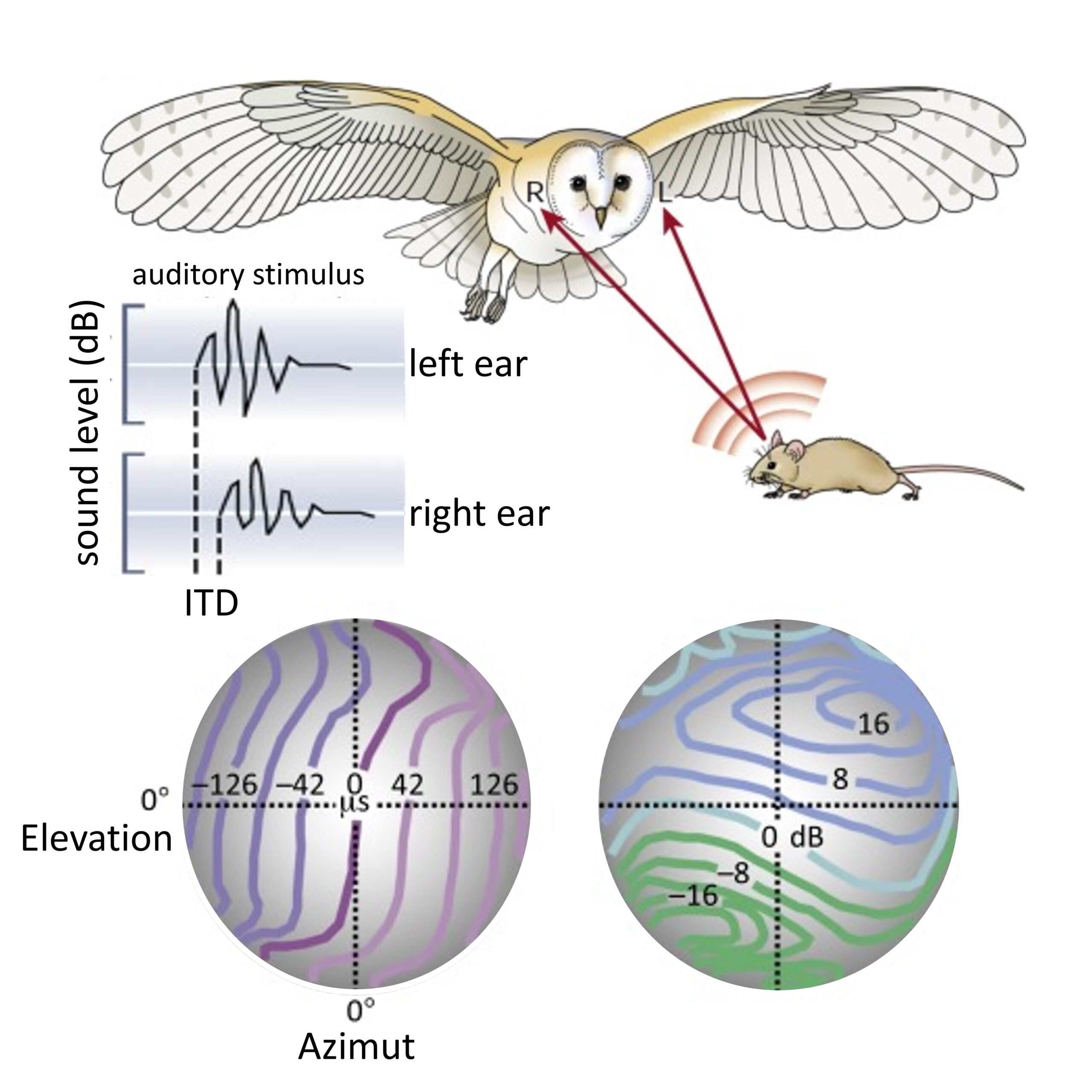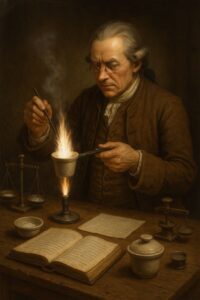The term kos likely referred to a large species of owl. The expression nyktikorax (“night raven”) in the Septuagint (Lev 11:17; Deut 14:16; Ps 102:7) points in this direction.
A plausible candidate is the long-eared owl (Asio otus). The term oach may refer to the Eurasian eagle-owl (Bubo bubo). The Greek translation echos, meaning “caller” or “howler,” is too vague to determine the species (Isa 13:21). Though present in the Middle East, this species has become rare. The term taschmas is translated as glauka in the LXX and might refer to a smaller species of owl (Lev 11:16; Deut 14:15). Little owls (Athene noctua) and barn owls (Tyto alba) have been widespread since antiquity. All four species share typical owl traits and are known to inhabit ruins. Some translations also interpret the word kippod as “owl,” but there is much to suggest it actually refers to the hedgehog (Isa 14:23; 34:11; Zeph 2:14).
Nearly all owls are nocturnal hunters. When they silently glide through pitch-black, surreal landscapes of ruins and ghost towns, they appear eerie: “Only desert ghosts live there, and houses full of owls” (Isa 13:21). Why don’t they crash into obstacles, and how do they detect their agile prey in the dark?
They don’t use echolocation like bats. Instead, their enormous, light-sensitive eyes enable them to see well even in minimal ambient light. Owl eyes are immobile in their sockets, so to look around, the owl must turn its entire head. While the myth that they can rotate their heads a full 180° is false, they can rotate up to 135° in either direction – which already looks quite amusing.

Specialists like barn owls require no light at all, relying entirely on their exceptional hearing. Their facial disc works like a sound funnel, directing noise to deeply embedded ear openings. The trick is that their faces are asymmetrical – each ear is positioned at a different height. This allows them to localize sound not only left-to-right but also up-and-down, creating a 3D auditory map to precisely target prey. Since they often pounce while gliding close to the ground, they must avoid any flight noise. To achieve this, airflow noises are minimized by comb-like serrations on the leading edge of the primary feathers and a soft, dense down on the wing surfaces.

As a bonus, owls have specialized filoplumes – fine hair-like feathers around their beaks and feet – with nerve-dense follicles. These act as tactile sensors. Just before striking, the owl relies on touch to capture prey with precision.
Owls are now seen as symbols of wisdom and charm, often used decoratively and prominently featured in bird parks. The giant eagle-owls, with their pointed feather tufts (which are ornamental and not related to hearing), are crowd favorites. They are the largest owl species and rightly dubbed “kings of the night.” Depending on region, their size decreases from northwest to southeast: In Norway, individuals have weighed up to 4.5 kg, while in Israel – the southern limit of their range – they weigh less than half that.

Unlike the highly specialized barn owl that feeds mostly on mice, the eagle-owl is a true generalist. Despite its large food demands, it thrives throughout most of Eurasia and is no longer considered endangered. Its adaptability is legendary. With a rich hunting ground, it sleeps by day and hunts in two nightly bouts: one at dusk and another before dawn, with a break in between. If still hungry, it hunts during the day. Not picky, it captures anything that moves. On the ground, this includes hedgehogs, rats, mice, rabbits, hares, ducks, partridges, piglets, fox pups, marmots, weak fawns, and even cats. Despite its stout body, it is a swift flyer, capable of catching crows or pigeons mid-air and agile enough to chase them through dense forests. It even tackles formidable opponents, preying on other owls like the tawny or long-eared owl, and even grey herons, hawks, and buzzards. Astonishingly, it hunts on foot as well – taking long strides to outrun fleeing mice. Near water, it’s even been seen fishing. Its fist-sized pellets reveal a diverse diet from its territory.
Miniaturized electronics and modern webcams have made the secretive lives of nocturnal owls visible. In 1991, as part of a rewilding project, Stockholm Zoo released a radio-tagged eagle-owl. Instead of heading for the wild, it stayed in the city. Newspapers reported on the adventures of “Karl-Edvard.” He found a wild mate named “Görel” (as dubbed by the public), and they mated on the central station’s roof. TV channel TV4 invited viewers to name their chicks. The entire country was charmed by Karl-Edvard’s visits to his parents at the zoo, where he’d sit outside their cage and “chat.” When his tracking data showed he was unwell, he was caught and diagnosed with pneumonia, successfully treated with penicillin. Three breeding cycles were documented, but all chicks died in urban accidents. Karl-Edvard himself perished in 1995, mourned by many.
The homepage https://uhu.webcam.pixtura.de offers a peek into the nest of the female eagle-owl Lotte in the Eifel region. With over 10 million views, she’s a minor media celebrity. Hundreds watch live, day and night. Horror struck when a raccoon climbed the 30-meter cliff on the night of May 17–18, 2021, and crept up to the nest. With little prey around, both parents had gone hunting. The raccoon waited until they were gone and devoured both nestlings as they tried desperately to resist.
Their oversized heads, expressive, stern faces, and dark, piercing, immobile eyes likely earned owls their reputation for wisdom. Countless libraries feature owls in their logos (often with glasses and a mortarboard), projecting scholarly prestige. Even in ancient Greece, the goddess Athena was symbolized by the little owl. Statues and coins across Athens bore its image, continuing to the modern Greek €1 coin. This explains the idiom “to carry owls to Athens” – meaning to do something superfluous.

Little owls and barn owls often dwell in ruined cities. They rest by day and dislike disturbance, making abandoned places ideal: “I am like…an owl among the ruins” (Ps 102:7). Likewise, Jesus was “in the right place” when, in “human form” (Phil 2:7), he entered a creation meant for humanity. But his soul suffered seeing it become a “ruin” due to the fall. Moved by human lostness, “he had compassion” (Mt 9:36) and wept at the death of a friend (Joh 11:35).
Sources:
Berger, A: Waschbär frisst Küken von Uhu Lotte – vor den Augen der Fangemeinde. Stern, 20.05.2021; https://www.stern. de/panorama/gesellschaft/waschbaer-frisst-kueken-von uhu-lotte-und-die-webcam-filmt-alles-30537700.html
Birkhead, T: Bird senses: Touch and hearing. New Scientist 2013; 219(2928):4-5; doi: 10.1016/S0262-4079(13)61891-6
Dagens Nyheter (Stockholmer Tageszeitung), 11.10.1995: Berguv dog efter vattenfest och halsont.
Fialko, K; Ali, JR; Céspedes Arias, L: The Sensory Ecology of Birds. Ornithology 2021; 138(2); doi: 10.1093/ornithology/ ukab001
Konishi, M: Die Schallortung der Schleiereule. Spektrum der Wissenschaft 1993; 6:58; https://www.spektrum.de/maga zin/die-schallortung-der-schleiereule/820899
LePiane; K; Clark, JC: Evidence that the Dorsal Velvet of Barn Owl Wing Feathers Decreases Rubbing Sounds during Flapping Flight. Integrative and Comparative Biology 2020; 60(5):1068 1079; doi: 10.1093/icb/icaa045
Schillberg, P; Brill, S; Nikolay, P: Sound localization in barn owls studied with manipulated head-related transfer functions: beyond broadband interaural time and level differences. Journal of Comperative Physiology A 2020; 206:477–498; doi: 10.1007/s00359-020-01410-0
Uhu-Webcam: https://uhu.webcam.pixtura.de/
Wagner, H; Weger, M; Klaas, M: Features of owl wings that promote silent flight. Interface Focus 2017; 7:20160078; doi: 10.1098/rsfs.2016.0078
Waldenström, H: Berguven hoar åter i Nationalstadsparken. Nationalstadspark 2015; http://www.nationalstadsparken.se
Image Credits:
Wikipedia: Obverse and reverse of a Greek stater / SNGCop_039.jpg / Classical Numismatic Group, Inc.
andere Lizenzen: Title – Eagle owl portrait / shutterstock_1684372885.jpg / Russell Marshall // Eagle owl with prey / shutterstock_427252735.jpg / Ondrej Prosicky

